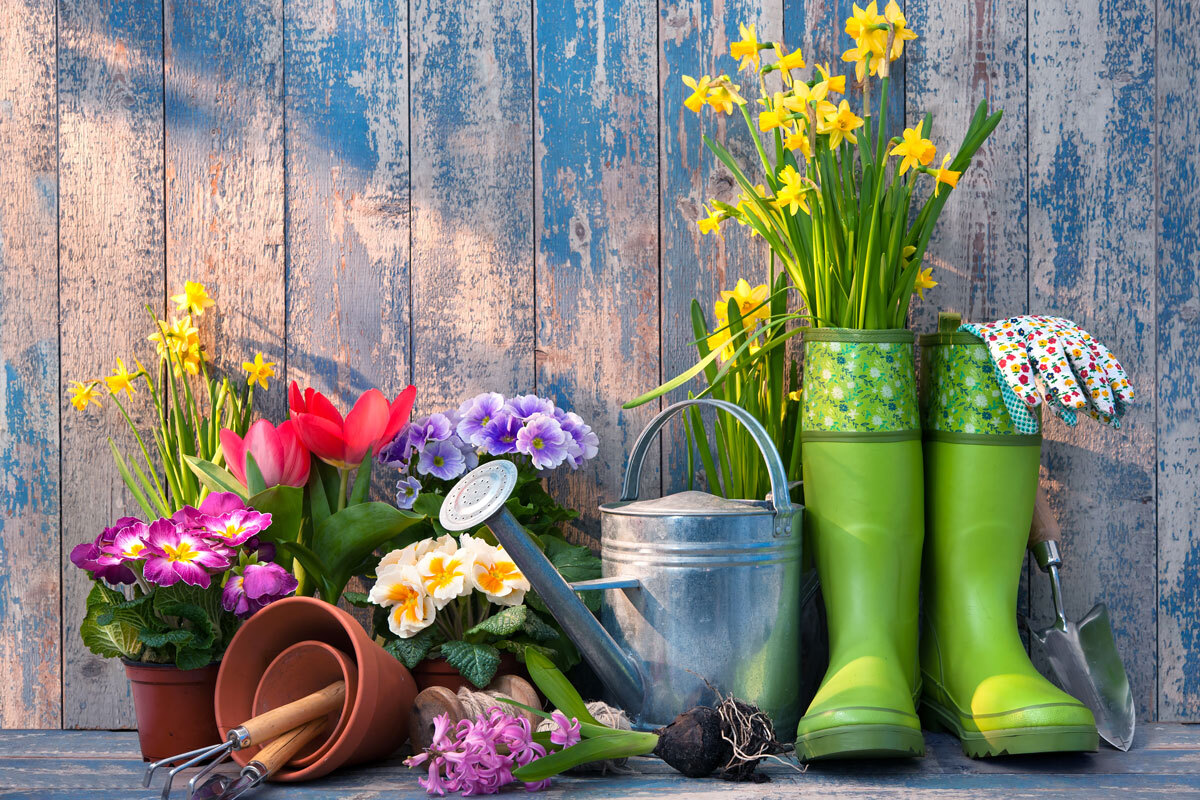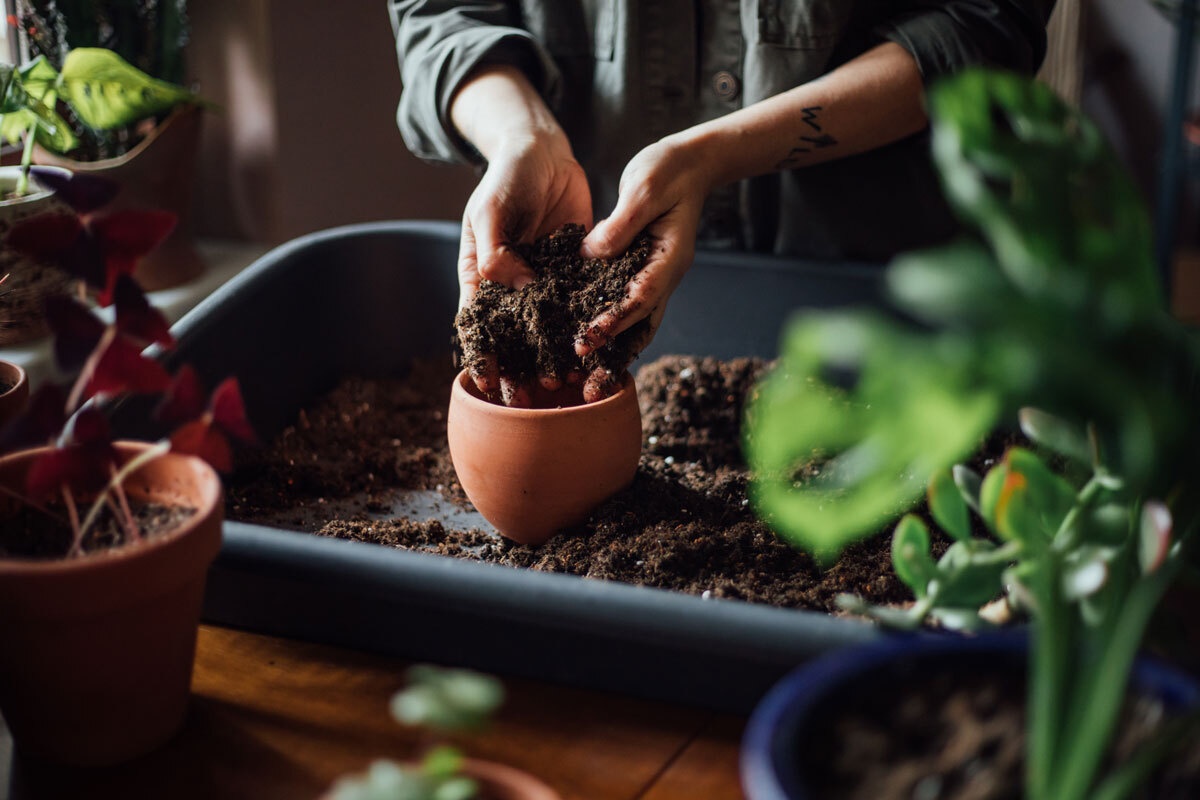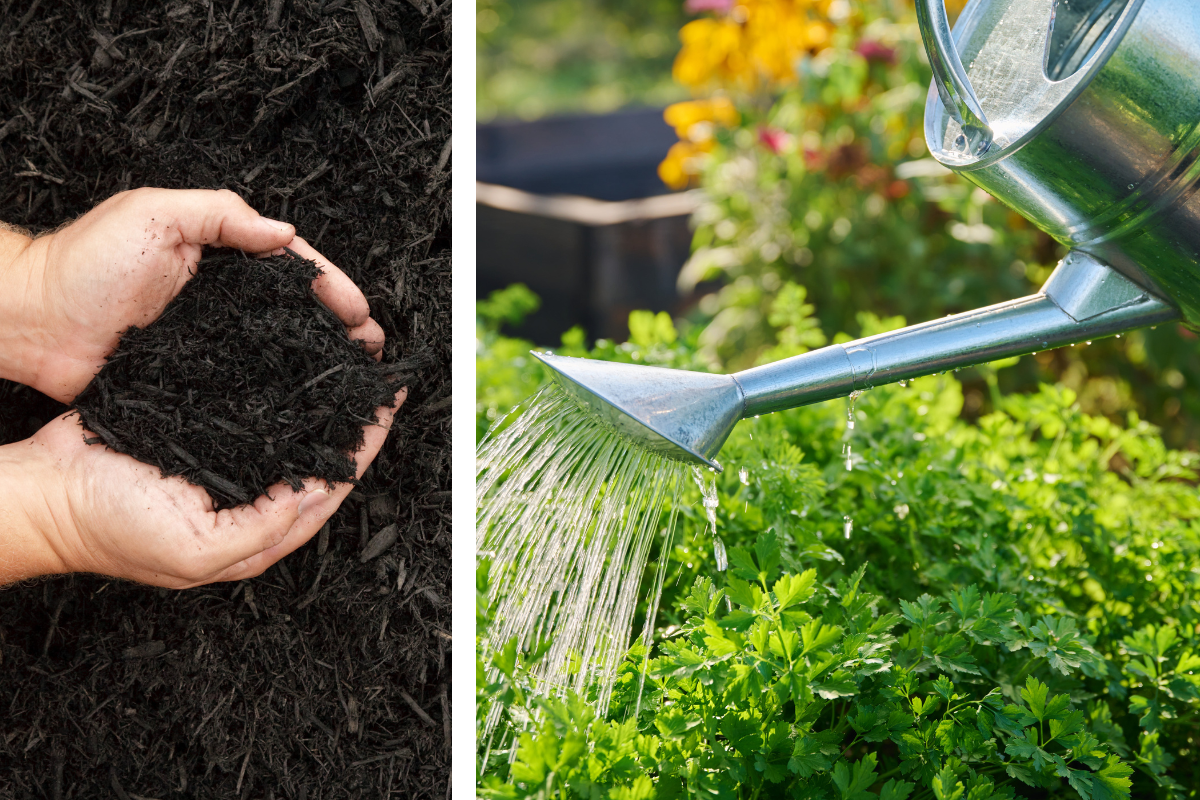

Sprout into Spring with these Gardening Secrets.
Spring is the season during which nature revives and strengthens itself after Alberta’s cold winter months. In spring, dormant plants begin to grow again, and new seedlings sprout. Whether you’re a novice gardener or a seasoned green thumb, Excel Homes went to Danielle Hall of Eagle Lake Nurseries to ask her to share her top tips for your most inspiring gardens yet.

When is the best time to plant in Alberta's climate?
Broadly speaking, it’s best to wait until after the May long weekend or later, depending on your Zone, for anything that is not frost tolerant. Once the ground has thawed, you can plant anything hardy (trees, shrubs, some very hardy perennials, could even get away with root vegetables). Regarding what Zone your gardens are in, check out the Government of Canada, Natural Resources Canada, and plant hardiness zone maps in your city. P.S. Most of Alberta is a Zone 3.
What grows best? Hardiest plants?
Alberta’s growing season is typically 3-4 months (end of May to the beginning of October, generally), so don’t try anything over 120-ish days for seeds unless you will be starting it very early indoors with grow lights. The hardiest plants will typically be your native varieties (there is no exact definition, but the broad strokes are - plants that have grown in the given region or ecosystem due to only local natural evolution with no intervention from people). You can find Alberta’s native plants online.

How to prepare your soil for the best crops ever.
Healthy soil is an absolute must whether you are growing flowers, herbs, or vegetables. First off, check what type of soil you actually have. Sand, clay, loam? Then, you’ll want to add nutrients in the form of organic matter, which was originally produced by living organisms (like bugs, plants, and animals) and has gone through some form of decomposition. Compost is what most people think of when it comes to organic matter. Plants need three main nutrients essential to plant functions – Nitrogen, Phosphorus, and Potassium. If you are doing raised beds, a great rule of thumb for a soil mix is often 1/3 topsoil, 1/3 peat, and 1/3 compost. Hall cautions gardeners NOT to add things such as sugar or Epsom salts as they won’t improve the taste of your plants and will not fight against certain plant ailments. Also, eggshells and banana peels will not provide any beneficial nutrients to your plants.

Is mulch a good idea?
One of the easiest ways to make your yard stand out is to add a fresh layer of mulch around the garden beds. It can also reduce weed growth, keep the soil temperature cool, and reduce evaporation. Most gardens benefit from mulch due to the moisture-retaining factors and the mulch's shelter to the roots.
What is the ideal time of day to water & how often?
You want the water you put into the ground to stay there and not evaporate. Therefore, it is usually recommended to water either first thing in the morning or later in the evening once the day's heat has lessened. Having said that, in the summer months, you’ll want to water both morning and evening. P.S. If you do water during the day, it will NOT burn your leaves. It won’t be as effective as watering outside during the hottest times. The water will mostly evaporate, but it will not do damage.
How much sun do most plants & veggies require?
Sunlight is critical for most plants in a vegetable garden, and for many plants, the more hours of sunlight, the better. Having said that, it is entirely plant-dependent. Your best source is the seed packs or plant tags, which will tell you exactly how much sun your plant will need. A good rule of thumb is knowing that many flowering plants need some degree of full sun, typically with 6-8 hours of direct sunlight per day. Anything part sun or shade needs about 4-6 hours; the defining factor is when. Part sun, you want those sunshine hours to include mostly afternoon sun. Part shade, you want those sunshine hours to be mostly before midday. And full-shade plants would want no more than four hours of sun daily.
Excel Homes hope to have inspired you with Hall’s tips and ideas so that you can enjoy your most beautiful and fruitful gardens this year. We couldn’t talk about plants without mentioning those plants which are non-toxic and toxic to your child or pet. See below for some recommendations.

Family and Pet-Friendly Plant Recommendations
- Spider Plant (Chlorophytum comosum): Known for its air-purifying qualities, it is safe for children and pets.
- Boston Fern (Nephrolepis exaltata): This lush fern adds a touch of elegance to any space and is non-toxic to both humans and pets.
- Areca Palm (Dypsis lutescens): With its graceful fronds, the areca palm is a safe choice, making it perfect for households with curious pets or young children.
- African Violet (Saintpaulia): These small, colourful flowers thrive indoors and pose no threat to family members or pets.
- Bamboo Palm (Chamaedorea seifrizii): This palm variety is non-toxic and can add a tropical vibe to your home without any worries.
- Peperomia (Peperomia spp.): With various leaf shapes and colours, peperomia plants are safe for everyone in the family, including pets.
- Christmas Cactus (Schlumbergera): This festive succulent blooms during the holiday season and is non-toxic.
- Friendship Plant (Pilea involucrata): This plant's small, round leaves are visually appealing and harmless to children and pets.
- Polka Dot Plant (Hypoestes phyllostachya): Its vibrant, spotted leaves make it an attractive addition to your home, and it's safe for your loved ones, too.
- Money Plant (Epipremnum aureum): Also known as Devil's Ivy, this plant is easy to care for and safe for humans and pets.
Remember, it's always a good idea to monitor your pets and children around plants ad seek professional advice if you have any concerns. MyHealth.Alberta.ca is a great resource for both indoor and outdoor plants. For instance, many people believe poinsettias are dangerous; the biggest risk is touching rather than eating the plant, as it can cause skin or eye irritation to both humans and pets. If the plant you are looking for isn’t on the list, or you have questions or concerns, call PADIS (Poison and Drug Information Service) at 1-800-332-1414.

